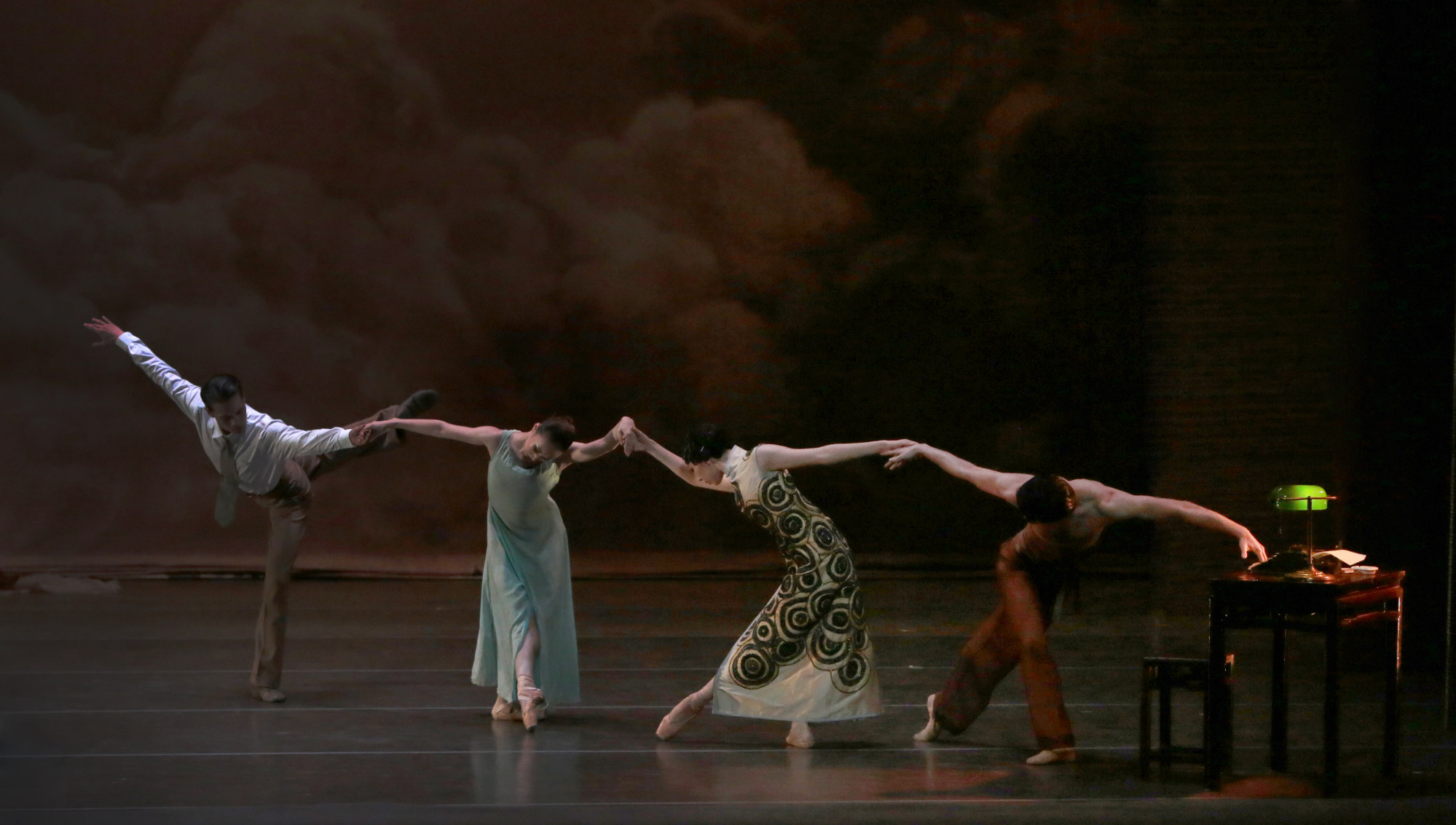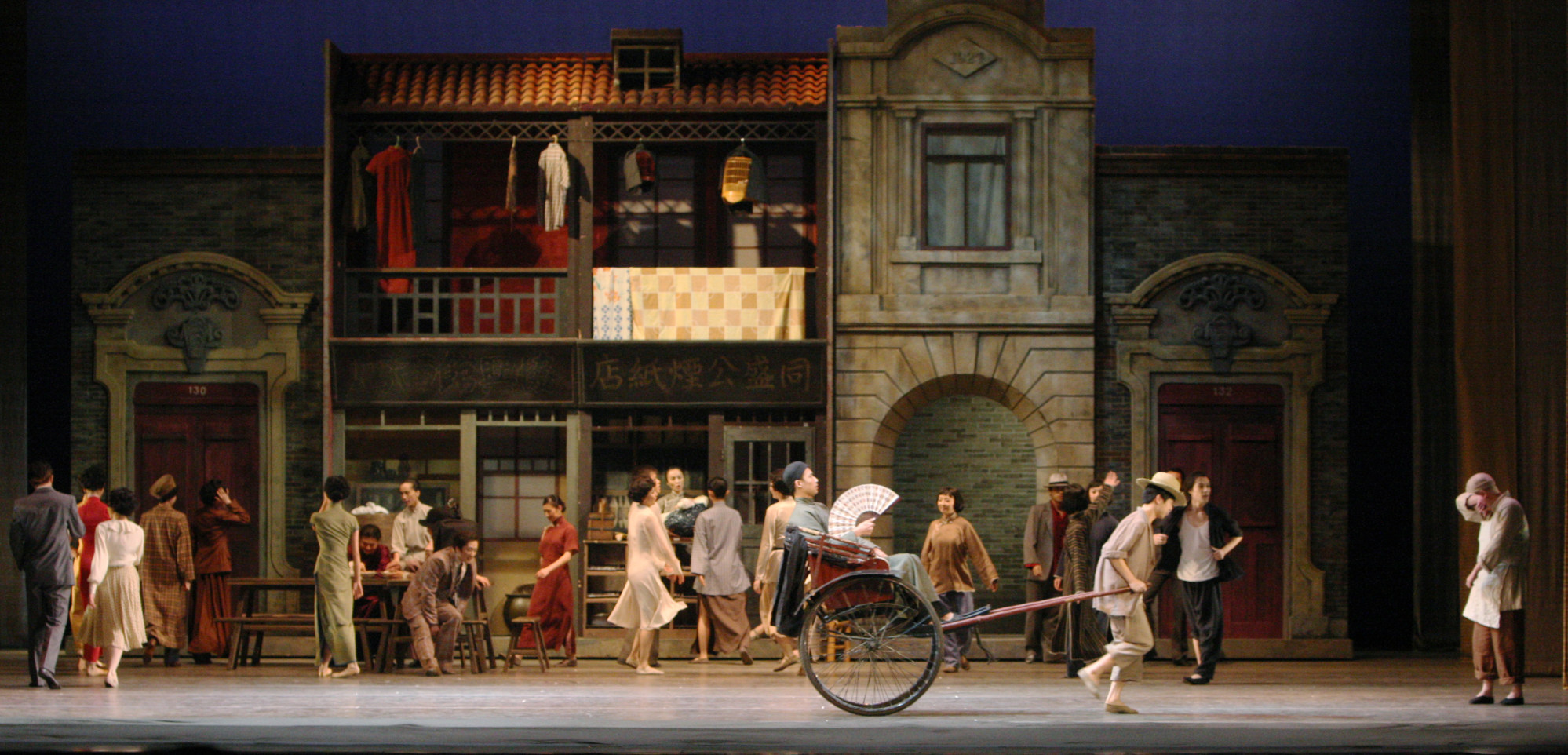
Two couples, the Lis and the Wangs, move into the same shikumen (Chinese town house) building on the same day.
Mr Li, a writer, and Mrs Wang (these are the only names given for them) are immediately drawn to each other but refrain from expressing their feelings, even when their respective spouses – between whom sparks have also flown – embark on an affair and run away together.

When war hits Shanghai Mrs Wang comes to meet Mr Li at an inn where they finally consummate their love, but they then lose contact in the wartime chaos.
After peace returns, Mr Li goes back to his old home and sees Mrs Wang walking down the street with her small son (presumably his child from their one night of passion).
Why does he not go after her? The ballet ends with Mr Li left alone, heaving a sigh of love and longing, while this reviewer left heaving a sigh of exasperation at his gormless behaviour.
Robert Lepage uses puppets to tell story of teenage trauma in 1970s Quebec
Robert Lepage uses puppets to tell story of teenage trauma in 1970s Quebec
D’At’s choreography is well crafted and his experience in creating narrative work shows in some imaginative touches – rain pours down (yes, real water on the stage) at the beginning and end of the ballet and the nuances of mutual attraction and hesitation are neatly done.
The scene at the inn where Mrs Wang agonises over whether to sleep with the man she loves is especially effective.
Unfortunately the plot is too thin to sustain a full-length ballet and d’At therefore resorts to far too much padding, with scenes that do nothing to advance the story.

The device of an “illusion” version of the two protagonists, dancing the passionate duets they cannot dance in real life, is confusing unless you read the synopsis (and it’s an odd choice to give the refined Mr Li such a brawny, bare-chested alter ego).
The encounters between Mr Li and Mrs Wang rapidly become repetitive. Random characters pop up with no explanation of who they are supposed to be other than that they are there to fill in the running time with some showy dancing.
There is too little of the “bad” couple of Mrs Li and Mr Wang – a pity, as their relationship is intriguing and creating a counterpoint between the two couples might have made a more interesting story.
Le Corsaire by La Scala ballet: well danced in places, but uneven
Le Corsaire by La Scala ballet: well danced in places, but uneven
There are three large-scale set pieces: two street scenes outside the shikumen plus a scene in a nightclub with a cabaret routine. While these provide a showcase for the whole of Shanghai Ballet’s large ensemble and are performed with plenty of energy, they feel more Broadway than ballet.
The score is the foundation for good storytelling and choreography in narrative ballet, and here this is a problem. I have never before seen a ballet where the house programme gives no information about the music.
The musical mishmash lacks coherence, and while the jazz sections are fun and right for the period, they come up short compared with the splendid live performance of similar music in Hong Kong Ballet’s recently revived The Great Gatsby.

Kaplan’s sets and costumes demonstrate why he is one of the world’s leading theatrical designers. An ingenious set is transformed seamlessly from a shikumen to a nightclub to an inn; costumes vividly evoke 1930s Shanghai with a characteristic mix of traditional Chinese and Western clothing – and of course those gorgeous qipaos.
The high standard of dancing shows how much the company has progressed since their previous visit here 11 years ago.
The dancers have the typical strengths we associate with Chinese ballet: strong technique and slim, elegant physiques – the women’s feet and legs are particularly beautiful.
Qi Bingxue as Mrs Wang and Wu Husheng as Mr Li gave assured, expressive performances, and He Linyi stood out as the adulterous Mrs Li, bringing some real emotion and complexity to the character.
“Shanghai Ballet: A Sigh of Love”, 52nd Hong Kong Arts Festival, Hong Kong Cultural Centre Grand Theatre. Reviewed: March 22.

